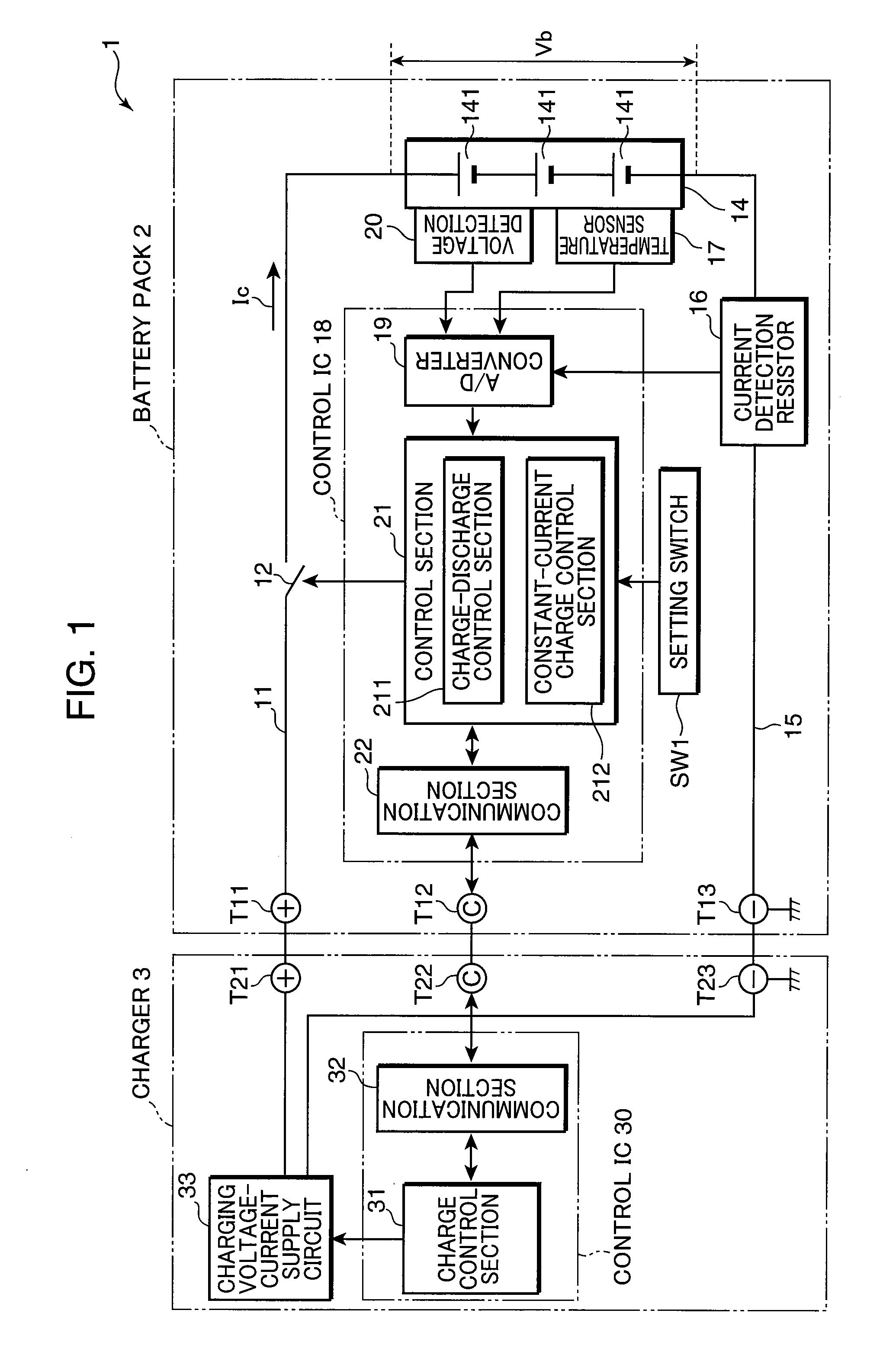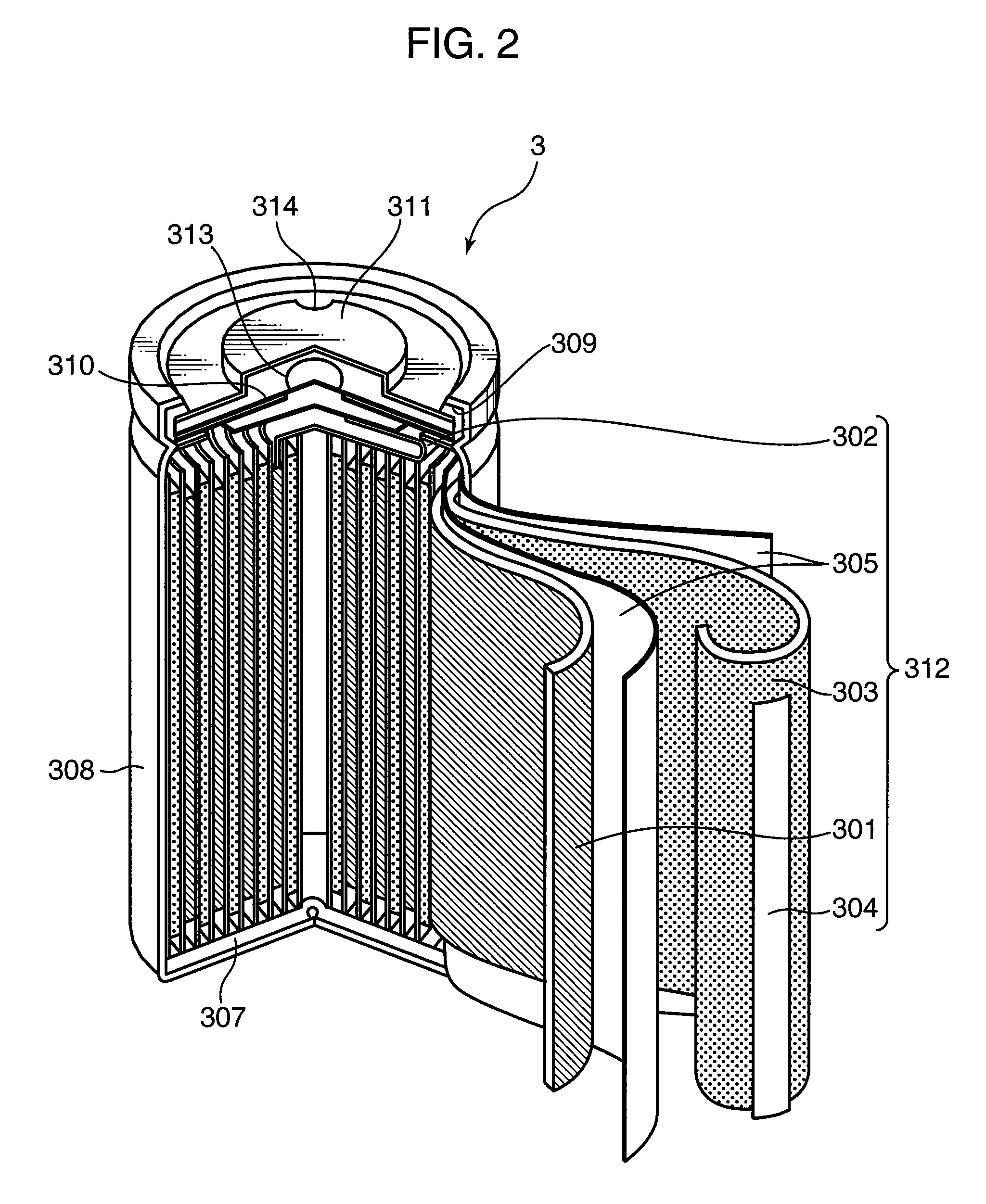Charging system, charging apparatus and battery pack
a charging system and battery pack technology, applied in the direction of electric vehicles, transportation and packaging, electric generators, etc., can solve the problems of enlarge the short circuit, slow charging speed, and long time to increase the charge capacity, so as to increase the battery capacity of a secondary battery, and prevent the secondary battery from deteriorating
- Summary
- Abstract
- Description
- Claims
- Application Information
AI Technical Summary
Benefits of technology
Problems solved by technology
Method used
Image
Examples
Embodiment Construction
[0034]Hereinafter, a charging system according to an embodiment of the present invention will be described with reference to the attached drawings. In each figure, component elements are given the same reference characters and numerals, as long as they are identical to one another. Thus, their description is omitted. FIG. 1 is a block diagram, showing an example of the configuration of the charging system according to an embodiment of the present invention. This charging system 1 is configured by a battery pack 2, and a charger 3 which charges it. Further including load equipment (not shown) supplied with electric power from the battery pack 2, an electronic-equipment system may also be configured. In addition, the charger 3 may also be formed as a part of such load equipment. In that case, the battery pack 2 is charged by the charger 3 in FIG. 1, but the battery pack 2 may also be attached to the load equipment and charged through the load equipment. The battery pack 2 and the char...
PUM
 Login to View More
Login to View More Abstract
Description
Claims
Application Information
 Login to View More
Login to View More - R&D
- Intellectual Property
- Life Sciences
- Materials
- Tech Scout
- Unparalleled Data Quality
- Higher Quality Content
- 60% Fewer Hallucinations
Browse by: Latest US Patents, China's latest patents, Technical Efficacy Thesaurus, Application Domain, Technology Topic, Popular Technical Reports.
© 2025 PatSnap. All rights reserved.Legal|Privacy policy|Modern Slavery Act Transparency Statement|Sitemap|About US| Contact US: help@patsnap.com



